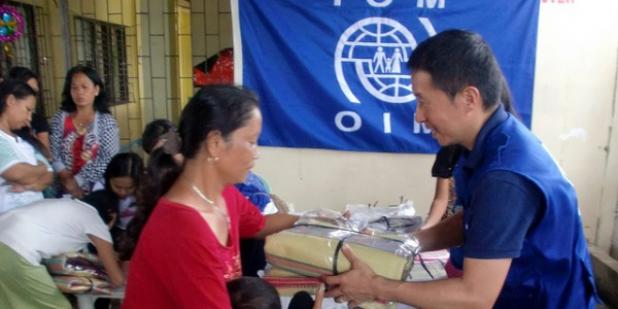
27 November Update for CCCM in the Philippines
As of 27 November 2013, DSWD estimates for the number of persons affected by Typhoon Haiyan have increased to 14.3 million. Over 3.5 million people are now estimated to have been displaced. 3.3 million people are staying with friends and relatives, with 226,000 IDPs remaining in some 1,085 evacuation centres across affected areas.
Although accessing remote communities, poor communications and power outages continue to affect operations, the Cluster is undertaking important and valuable assistance, monitoring and coordination work.
In Roxas and Estancia, in an effort to restore some level of normalcy for affected families, the CCCM Cluster and DSWD, in collaboration with Save the Children, UNICEF and the Canadian DART Team, assisted in setting up four child-friendly spaces as regular school classes resumed this week. During the day, families using the schools as evacuation centres leave to go to the child-friendly spaces, while pupils return to class. At night, families return to the classrooms until a more permanent solution is found.
The entire population (1,240 families) of the barangay affected by the oil spill off the coast of Estancia, Iloilo Province, requires temporary shelter solutions after having been evacuated ahead of operations to contain damage from the spill. 162 families affected by the oil spill have been housed in an emergency centre. 152 families have received tents to set up near the emergency centre. Authorities continue to explore options for the remaining 926 families.
In Guiuan, CCCM continues to assist the safe and operational set up of the camp for the 96 families currently present (with eventual capacity of 300 families). The cluster seeks to ensure minimum standards to avoid significant hygiene/protection problems. Actions are being coordinated with other clusters to ensure the required assistance is provided.
CCCM’s geographic priorities correspond to the areas with the most severe displacement: Tacloban (19,662 inside evacuation centres and 211,511 total displaced); Ormoc with 51,893 persons displaced; Capiz province where there are severe levels of displacement (691,867 displaced) with 130,368 displaced in Roxas municipality. In Guiuan, there are 32,204 displaced persons with 1,184 persons inside evacuation centres (all figures from 27 November).
The results of the MIRA assessment, released today, closely match the initial assessments carried out using the Displacment Tracking Matrix (DTM) (see 25 November CCCM update) in 64 sites in the catchment areas of the Tacloban, Guiuan, Ormoc, and Roxas hubs: food and shelter assistance, livelihoods recovery and displacement management are the top priorities. DTM will continue to been expanded across all displacement affected areas, and by the end of the weekend should be completed in every municipality in Leyte, Biliran Island and the south eastern part of Samar.
As international military assets and emergency health teams prepare to leave in the coming days, coordination between international, national and local partners is crucial to ensuring these needs are met. Information collected through the DTM will serve to monitor needs of displaced persons and improve coordination between partners in the coming days.
For more information on these and other response activities, please visit http://philippineresponse.iom.int/.
